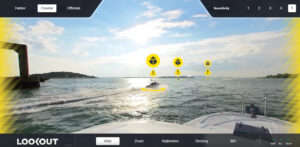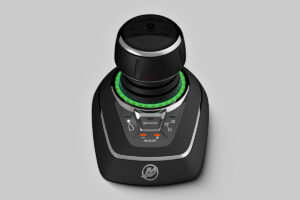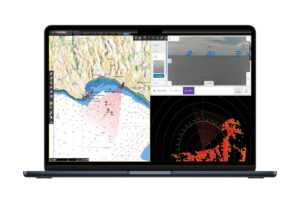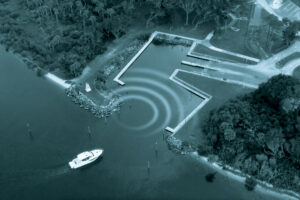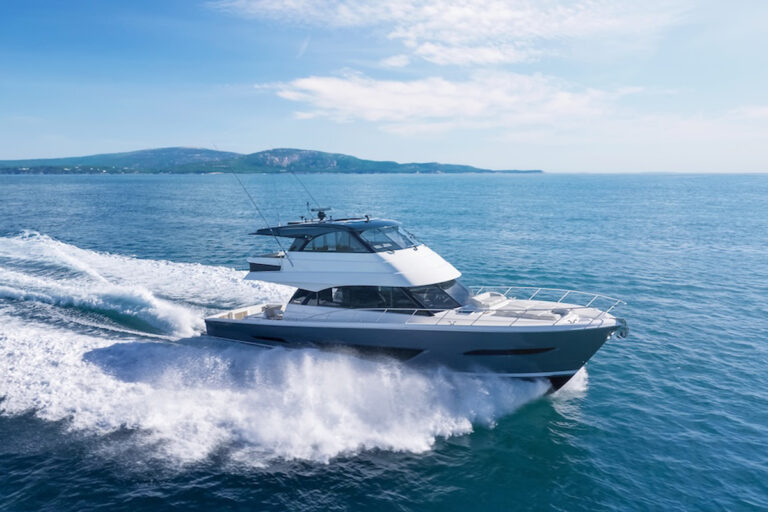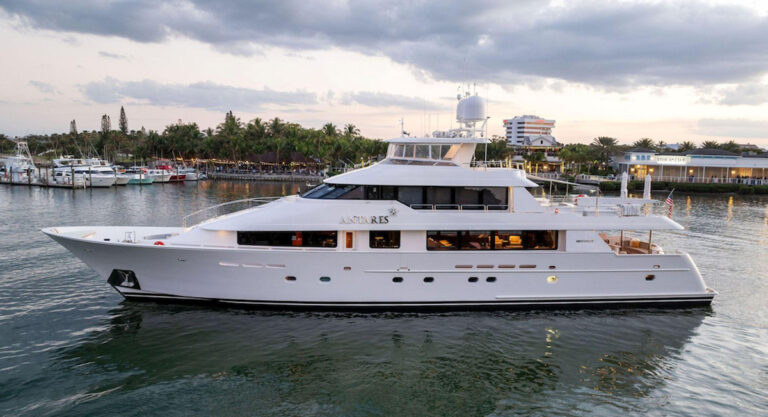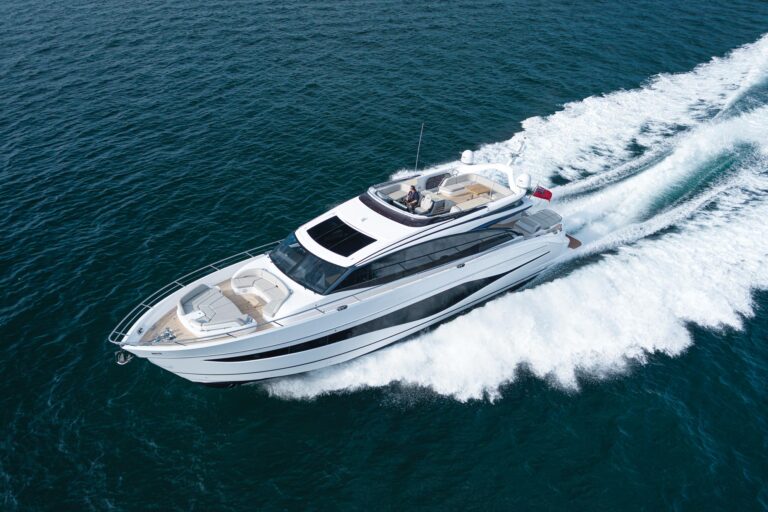
Clear above, visibility unlimited. These glorious conditions greeted us as Simrad ambassador Mark Maus drove us down Fort Lauderdale, Florida’s Stranahan River aboard his Yellowfin 36 center-console. However, it was impossible to miss the half-dozen container ships anchored a few miles offshore. We entered open waters, and Maus turned to port, paralleling the ships and spinning his Simrad Halo 3004 open-array radar. I stared at the 19-inch Simrad NSO evo3S multifunction display. The ships were there, of course, but the radar was also painting targets behind these giant metal walls. I studied the screen and compared it with the actual horizon. Moments later, a distant sailboat passed behind a ship and heaved into view, confirming the Halo 3004’s impressive returns.
Pulse-compression radars arrived in 2015, and Doppler processing arrived in 2016. Today, pulse-compression and Doppler are the industry standards. While other manufacturers build more powerful open-array radars, Simrad’s Halo 2000 and Halo 3000 radars deliver more power on target than the company’s previous-generation offerings while adding proprietary features and, for serious anglers who can accommodate a Halo 3000, Simrad’s Bird+ mode.
Halo 2000 radars are available in three sizes. As their monikers portend, Halo 2003 radars ($6,400) employ 3-foot arrays, Halo 2004 systems ($6,900) leverage 4-foot arrays, and Halo 2006 radars ($7,500) have 6-foot arrays. Halo 3000 radars are available in two sizes: Halo 3004 ($8,500), which has a 4-foot array, and Halo 3006 ($9,000), which features a 6-foot array.
All Halo 2000 radars transmit at 50 watts, while Halo 3000 radars transmit at 130 watts. The Halo 2000 radars can detect targets up to 72 nautical miles away, while Halo 3000 models deliver a maximum range of 96 nautical miles. They each have a minimum range of 20 feet. Both radars spin at variable speeds, ranging from 16 to 48 rpm. Spin rate is governed by the radar’s current operating mode, with closer-range operations requiring faster rotations than longer-range operations.
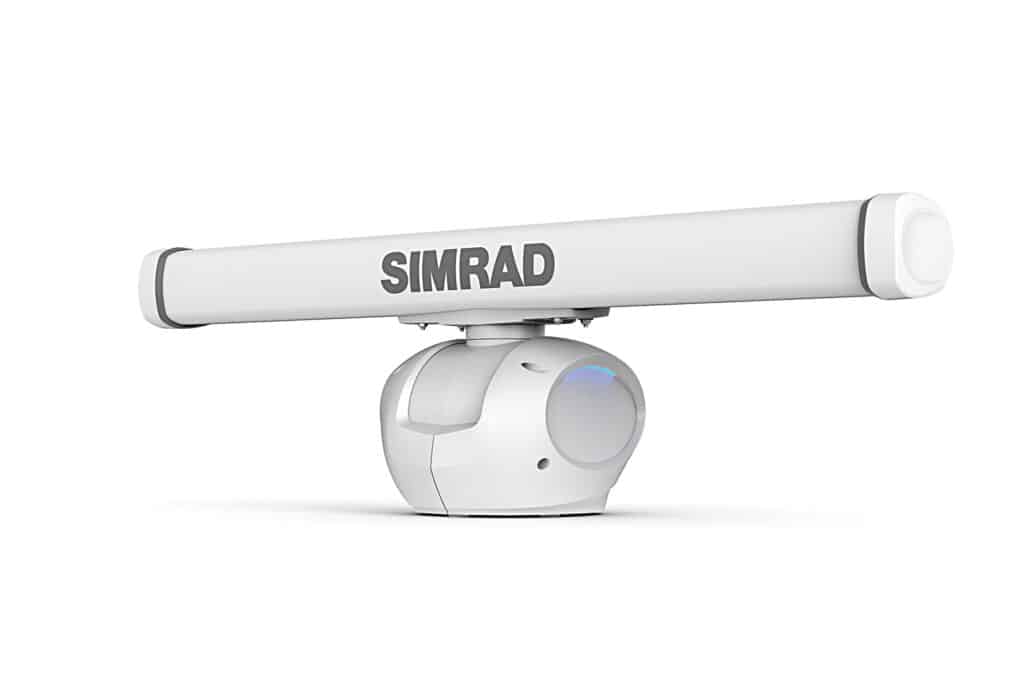
“Under the hood, everything is new,” says Laurie Bates, product director of digital systems at Navico Group, about Halo 2000 and 3000 radars, adding that this is the first major platform upgrade to Simrad’s open-array radar systems since 2015. That said, Simrad released its radome-enclosed Halo20 and Halo20+ radars, which transmit at 20 and 25 watts, respectively, in 2019, and Halo 2000 and Halo 3000 use this architecture. “We improved everything,” Bates says, adding that this includes new RF bricks, motors, gear boxes and drivetrains.
While their antenna arrays and transmitted power differ, Simrad’s Halo 2000 and Halo 3000 radars offer identical feature lists, with one significant exception: Bird+ mode (more on that later). These shared features include ZoneTrack, which Bates says is effectively a zone-based automatic-radar-plotting aid (ARPA) that automatically detects and tracks up to 50 targets within its two user-designated zones (that means users can set and define the scope shape and position of their two ZoneTrack zones); VelocityTrack, which is Simrad’s proprietary Doppler processing feature; and Dangerous Target Alerts, which identifies targets on collision courses and provides their relative range, bearing and heading.
Additionally, Halo 2000 and Halo 3000 radars support Target Tracking, where the radar concurrently seeks—and tracks—targets over short, medium and long ranges while recording a history of each target; and Watch Target, which allows a user to manually select onscreen targets for the radar to track. Both radars also feature preset user modes (read Bird, Harbor, Offshore and Weather) that electronically optimize the system’s settings to best match the vessel’s operating environment.
Halo 2000 and Halo 3000 radars also deliver dual ranges and the ability to generate synthetic Target Trails, the latter of which graphically depicts the target’s historical radar pings as onscreen trails. These trails, Bates says, provide the skipper with improved situational awareness. “Target Trails gives users confidence to see what [onscreen targets] are doing,” he says, adding that ferries or ships tend to sail in straight, shortest-course lines, while recreational vessels (say, racing sailboats) tend to move more sporadically. “You can see if [the target] is professionally or amateur-operated,” he says.
While Halo 2000 and Halo 3000 share many features—and they’re both bundled inside IP67-rated housings that can operate in winds up to 80 knots—Halo 3000 also comes with Simrad’s all-new Bird+ mode, which uses the radar’s 130 watts to locate flyers up to 8 nautical miles away.
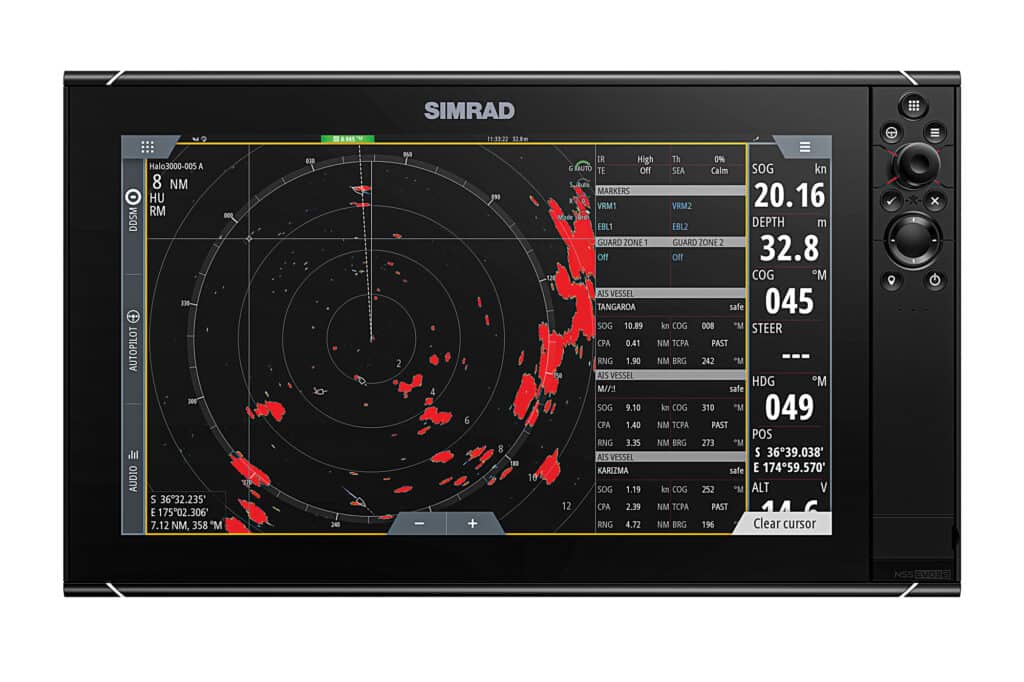
“We actually deliberately reduce the range resolution,” Bates says of Bird+ mode, adding that Halo 3000 radars leverage a series of “range buckets.” “We enlarge the size of those [buckets] so we can try to capture a flock of birds, so [there is] a larger number of weak targets within each given range bucket.”
If this sounds counterintuitive, keep reading: “Having reduced range resolution, typically in a radar, this would be bad,” Bates continues. “But in this case, we want to do that to help us find birds.” Because of this, he says, Halo 3000 offers one range (not two) when operating in Bird+ mode. “In Bird+ mode, we’re very much saying, ‘Right now, the user has decided that they are very focused on finding birds,’ so we’re going to stop the radar from being distracted by any other mode or any other use case, and we’re 100 percent focused on tuning it for birds.”
In this mode, Dangerous Target Alerts, VelocityTrack and manual-target acquisition still work; however, Bates is clear that when operating in Bird+ mode, Halo 3000 has gone fishing.
Bates also says that the Halo 2000 radar can be fitted aboard vessels ranging from center-consoles to superyachts, while Halo 3000 will work well aboard everything from large center-consoles to larger sport-fishing battlewagons.
As for peering behind ships, Bates says no one can escape the laws of physics. “It’s always going to be challenging to see behind something very large,” he says. Good results, he explains, are “more closely linked to the [post-] processing and the actual pulse scheme that we employ, as opposed to pure [transmitting] power.”
Given the impressive features and the power ratings that are found aboard both new Halos, it’s evident that Simrad has charted a smart course of investing in its newest radars’ RF energy, both pre- and post-transmission.
Target Practice
Recognizing birds onscreen isn’t always easy. If this sounds familiar, Simrad’s expert suggests buying a few packs of chum and deploying it on a beach in the late afternoon. Then, position your vessel nearby and study your screen. This helps build your visual reference library.

